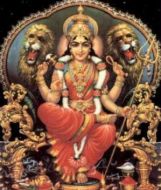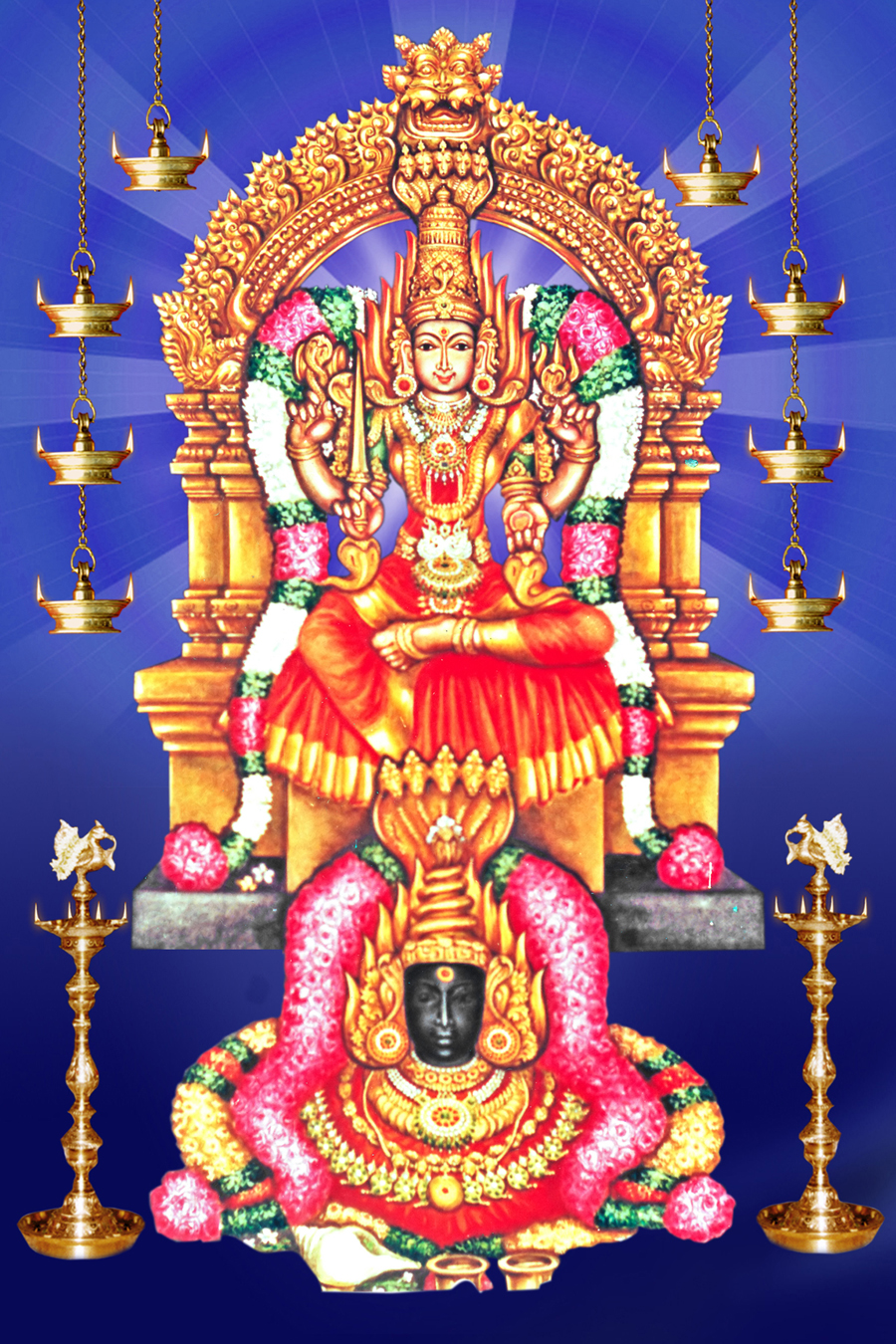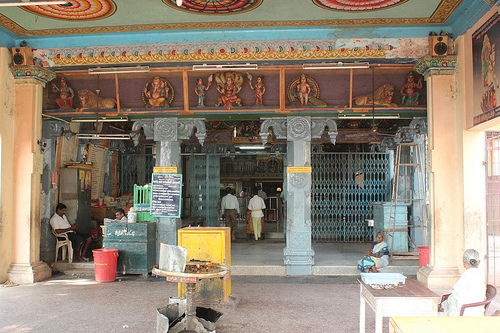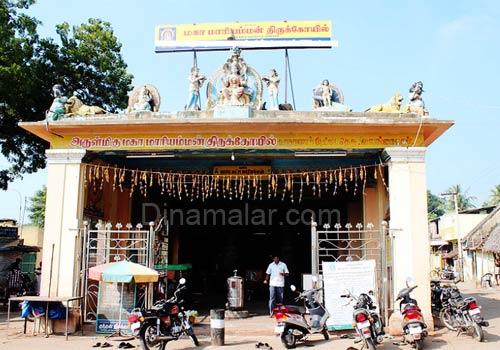Description
The Valangaiman Paadakatti Mariammam Devi Temple is a Shakti peetha sthalam in Valangaiman in Tamil Nadu and is ten kilometers away from Kumbakonam. The temple was said to have emerged on its own under the neem tree where it stands. The deity is known as Seethala Devi because the place is cooled by the neem leaves which also said to control chicken pox. 'Seethalam' means 'cool' and thus the goddess is called Seethala devi.
History
mariammam has several stories in the Hindu mythology. However, in Valangaiman, Mahamariamman has a wonderful story. Once upon a time in Valangaiman, there lived a farmer called Kathagounder and his wife Govind amammal. One day Govind amammal went to take a bath where she saw a Brahmin couple with a baby.
After her bath, she heard the cry of the baby from a nearby temple. She went to the baby and gathered people who tried to find her parents but in vain. She took up the child in her arms and it stopped crying. In due course of time the child was given to Govind amammal who named the child as Seethala. After some days the child died due to chicken pox and the couple was heartbroken. Later on people learnt that actually Mariammam had come to Govindamammal as the child. Out of devotion they built a temple and called it Seethala Devi Mariammam temple.
Importance/Significance
An important prayer is conducted in the temple and it is called Paadai Kavadi. A ladder called Paadai which is used for carrying a dead body is placed and decorated. A man is placed on this paadai and carried as a dead body. The man's son carries a fire pot and his wife walks with neem leaves. This particular ritual is done during the Paadai festival in March-April. Sick people here pray to the goddess that after they recover they would offer her Paadai Kavadi, that is they would lie on the Paadai and act as a dead body and be accompanied by his son and his wife. The paadai along with the man is brought into the temple where a priest spills holy water on the body and the person would then wake up as if to signify that he has come back from death by the blessings of the Goddess. The devotees believe that the goddess will always protect them from death.
Facts/Mythology
The temple is said to be a shakti peetha sthalam. It is said that Sati, the daughter of King Daksha had married Lord Shiva, whom Daksha despised. When Shiva was not invited in a yagna to be performed by Daksha, Sati could not bear the insult meted out to her husband and jumped into the sacrificial fire. Lord Shiva got infuriated and started his violent dance (Tandav Nritya) with Sati's corpse. To pacify him, Lord Vishnu cut Sati's body into pieces with his chakra and wherever the pieces fell, there stands a shakti peetha.
Festivals/Events/Gatherings
The Two Tamil months, Punguni and Avani are important here as grand festivals are celebrated during this time. Paadai Kavadi is held in Pungui. In Avani, special rituals are conducted every Sunday. On the last Sunday a floating festival is observed where the goddess goes around the tank in a Swan vehicle and the devotees throng all around to witness it.





